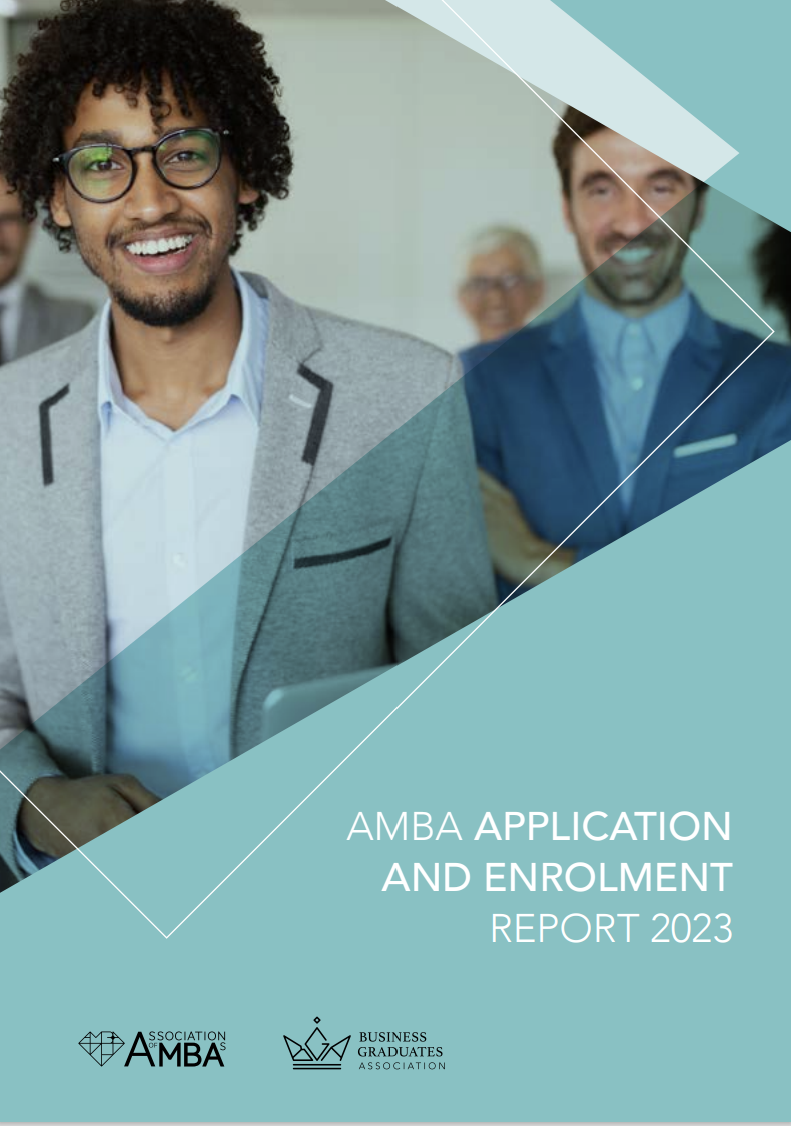Proportion of women applying to MBA programmes on the rise
Globally, applications for MBA programmes at AMBA-accredited business schools are on the rise and enrolments remained stable between 2021 and 2022.
The AMBA Application and Enrolment Report 2023 also positively showed a rise in the number of women both applying for and enrolling in MBA programmes over the same period.
Key Findings
MBA programmes in the AMBA-accredited network in 2022 (243 participating schools)
How courses are taught
- Globally, MBA programmes were most likely to be delivered in a part-time format in 2022, (61 per cent) followed by full-time (23 per cent) and then modular (16 per cent) formats.
- Overall, 58 per cent were taught in the classroom, 29 per cent were taught in a blended format and 13 per cent were taught in an online format.
MBA student recruitment
- The global conversion rate among AMBA-accredited business schools in 2022 was 28 per cent.
- Globally, the acceptance rate was 44 per cent.
- The global average yield for AMBA-accredited business schools was 65 per cent. (Yield refers to the percentage of students who enrol on programmes in business schools after having been offered a place).
Diversity in MBA programmes
- In 2022, 42 per cent of applicants to MBA programmes offered by AMBA-accredited business schools across the world were female, as were 41 per cent of those who enrolled in these programmes.
- Globally, 36 per cent of those applying to AMBA-accredited business schools are defined as international applicants and 26 per cent of those who ultimately enrolled are classified as international students.
Changes to MBA demand among AMBA-accredited business schools, 2021-22 (226 participating schools)
Trends in Provision
- In both 2021 and 2022, the most commonly intended mode of delivery was in-person classroom teaching, as reported by 71 per cent and 70 per cent of responding business schools, respectively. Yet, while only 36 per cent of programmes were ultimately taught that way in 2021, this mode was possible for 57 per cent in 2022. The difference between intention and reality has, therefore, dropped from 35 percentage to 13 percentage points.
MBA student recruitment
- Globally, there was a six per cent increase in the average number of applications received by each business school between 2021 and 2022 – in other words, the combined volume received for its entire portfolio of MBA programmes. There was also a seven per cent increase in applications to individual programmes.
- On a global level, the average number of enrolled students at AMBA-accredited MBA programmes remained relatively stable in 2021 and 2022, with a three per cent fall in enrolment volume per school and a two per cent fall per individual programme across the responding 226 business schools.
Diversity in MBA programmes
- The proportion of women applying to MBA programmes rose to reach 42 per cent in 2022, on average – an increase of two percentage points on the equivalent figure from 2021.
- On average, globally, there was an increase of four percentage points in the proportion of international students applying to MBA programmes between 2021 and 2022 and a decrease of seven percentage points in the proportion of international students enrolling on programmes in 2022.

